Explore Our Network of Sites
Search
By:
Aaron Hautala, volunteer president of the Cuyuna Lakes Mountain Bike Crew, and president of STRATELIGENT — a creative marketing/branding agency — knows a lot about communication. “I can never use the word ‘change,’ because it gets met with, ‘there’s nothing wrong.’ Even when there’s a lot wrong, it’s hard to admit it.”
More than two decades ago, a group of people in Cuyuna, Minnesota had a vision. A mountain biking mecca that would revitalize the town and region. In 1995, Gary Sjoquist, founder of the Minnesota Off-Road Cyclists, first attended a public hearing in Ironton, Minnesota about the newly completed Cuyuna Country State Recreation Area. There he met local cyclist Dan Cruzer, and the two of them starting working toward a plan to use this land for mountain biking. Nearly 15 years later, Hautala would volunteer to lead the crew, after witnessing how much work the founding members had done. It’s a long process to redefine a place, and one that takes different versions of leadership. Today they’re still in the midst of fully making their plan a reality, and it hasn’t been easy. The thing they come back to over and over when thinking about what really made this project happen, is language.
“We weren’t asking the older generation to leave, which is how it sounds when you just start talking about changing things.” Hautala says it wasn’t about convincing the community that they needed to change, it was about helping them understand how they could be part of bettering their place. “We wanted to make Cuyuna as relevant and as powerful as it was in its heyday, just maybe through a different tool.”
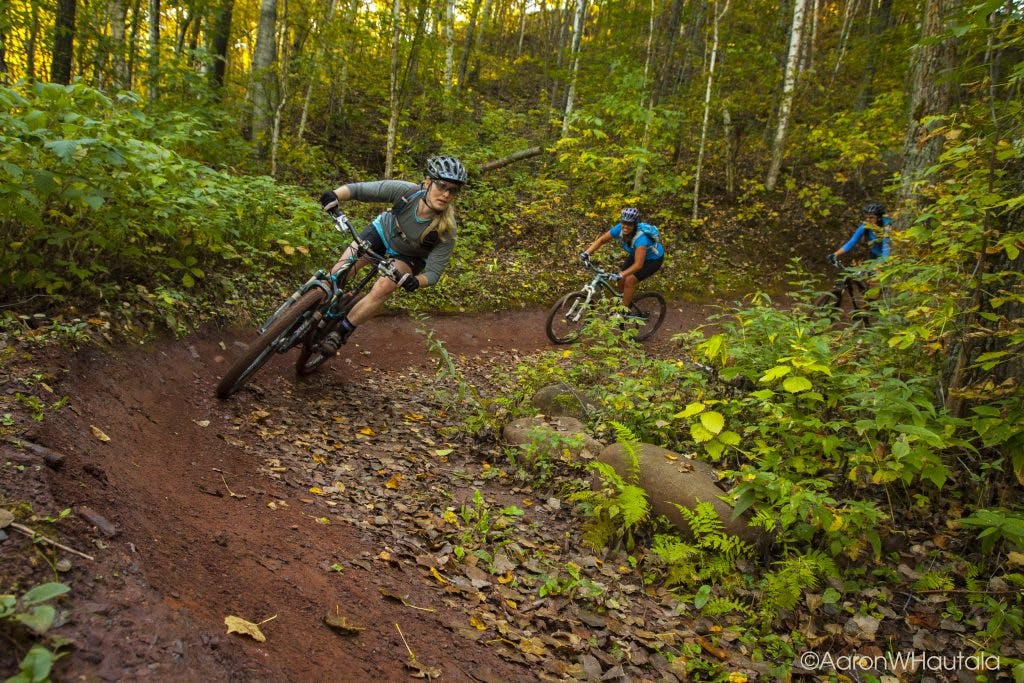
Cuyuna, Minnesota had its heyday at the beginning of the 20th century, mining iron. But that mining ended in 1984, and the town declined. The land sat unused. This familiar story can be seen across the country. People leave for bigger towns and cities, and a few hang on, hoping the mines will reopen and life as they knew it can resume. But Sjoquist and Cruzer saw an opportunity to dig for something other than iron. They wanted to make Cuyuna a destination for recreation, families, and enjoying the outdoors.
“If you just drop money in a community and build a park or a trail system but don’t engage the community that already exists, you’re going to have a divide.” Hautala came from a mining town himself, and in many ways, identified with what once was in Cuyuna. He was one of them, and he used that to his advantage. “People need to be able to talk: about their concerns and fears, and they need to be listened to.” Instead of telling locals that their concerns were silly, Hautala listened. “When someone who has been in a town for generations says something like, ‘bicyclists won’t spend any money, they don’t even have pockets,’ you can’t immediately tell them they’re wrong. Instead, you need to ask them to join your team.” Every time he heard a fear or a worry, he tried to acknowledge and engage it. Hautala says you’ve got to invite everyone to be a part of the evolution.
So he started inviting people to the conversation, and just never stopped. The Cuyuna Lakes Mountain Bike Crew consists of several core members, and numerous others who have already worked countless hours to make the dream a reality. They’re part of the International Mountain Bicycling Association, whose mission it is to protect, create, and enhance great mountain bike experiences. People in Cuyuna like Barb Grove, “Mama Cuyuna,” who was so proud of the mining, and needed a new way to be proud of her place. The CLMBC collaborated with several industry insiders, who helped them understand what a master vision for trails should look like. Representatives from Salsa Cycles, 45NRTH, Surly Bikes, and QBP all helped with the blueprints. Additionally, they consulted the Minnesota Department of Natural Resources, Division of Parks and Trails, Crow Wing County Land Division, Brainerd Lakes Area Economic Development Corporation, and the Cuyuna Range Economic Development Incorporated. Needless to say, there has been a continuously growing amount of input and opinion to create a necessarily detailed plan.
IMBA has a number of their own incredible resources for anyone working toward a park or trail system.
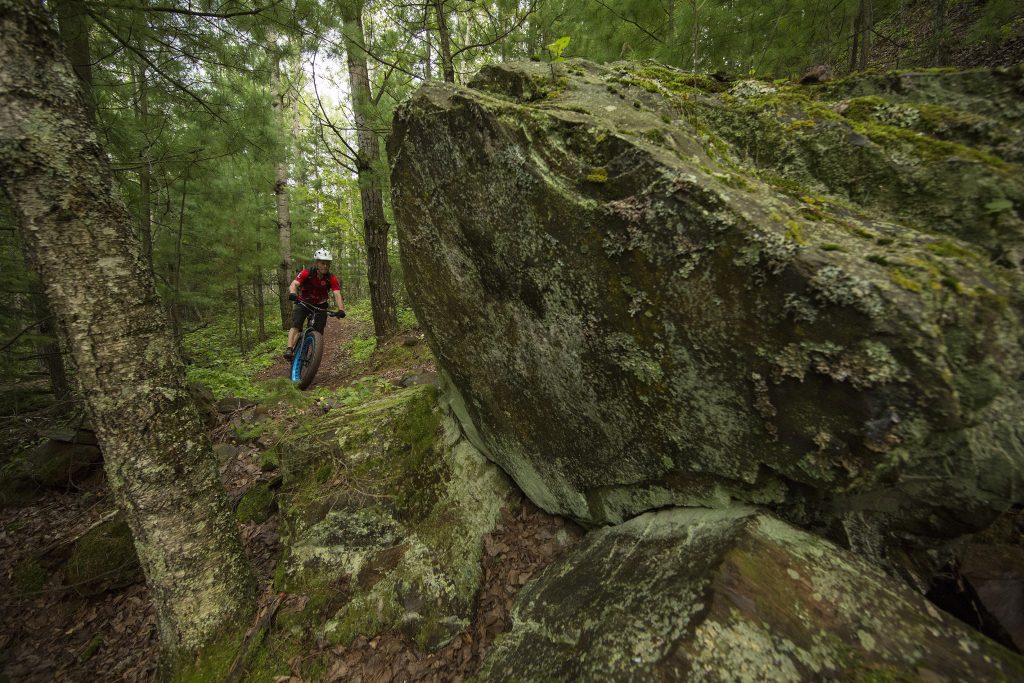
In the early stages of putting a plan into action, Gary Sjoquist (now a MN State Representative for the International Mountain Biking Association), started reaching out to all kinds of non-profit organizations to get help with funding. Between 2002 and 2009 they were the recipients in our community grants program. Local mountain biker Jeff Zipfell, a member of the Minnesota Off-Road Cyclists, completed a required Federal Highway Administration environmental assessment pro-bono, saving the project a significant expense. Moving forward became more and more of a community effort — and locals started pitching in their time and energy to see it through.
To help convince local business leaders about the potential impact of a national destination mountain bike trail system in Cuyuna, Sjoquist shuttled a group of business leaders, as well as CCSRA Park Manager Steve Weber, 200+ miles from Crosby to Cable, Wisconsin to meet with a group who had experienced the economic impacts from CAMBA’s extensive mountain bike trail network in the Hayward/Cable region. The meal at Three Rivers Eatery in Cable, allowed for lively discussion between the DNR, realtors, chamber of commerce staff, restaurant owners, county commissioners and others from the respective communities. The Cuyuna folks come back from the meeting convinced that mountain biking really could become an economic driver for the area. Many times these steps forward came from sitting down, sharing a meal, and thinking creatively.
June of 2011, marked the grand opening of the initial Cuyuna mountain bike trail network. The inaugural Cuyuna Lakes Mountain Bike Festival, coordinated by Sjoquist and sponsored by QBP, Red Bull, and GT Bicycles took place June 11th and 12th. Internationally known mountain biker Hans Rey, a member of the Mountain Bike Hall of Fame, attended the festival and proclaimed Cuyuna to be “one of the coolest trails anywhere.” In many ways, the launch marked the very beginning. Enter Aaron Hautala.
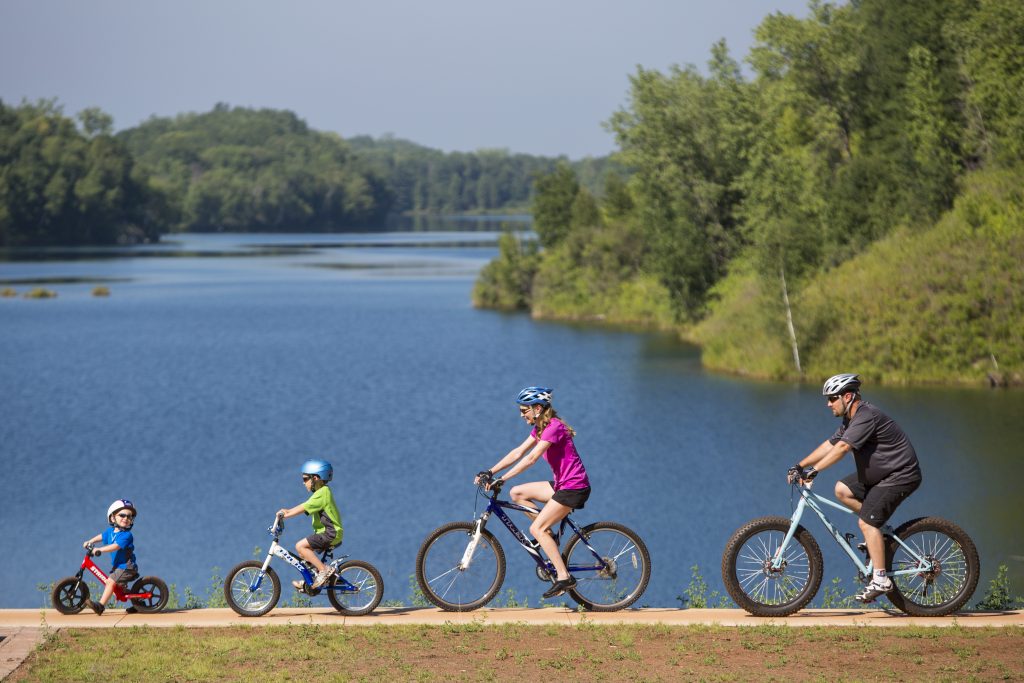
When Hautala volunteered to lead the Cuyuna Lakes Mountain Bike Crew in 2011, he did so because he could see that although the town had already come a long way, it needed to keep working full speed ahead. One thing that Hautala noticed when he started talking to the people who would need to have a hand in continuing to build the mountain biking trail system, was that lots of people didn’t talk much outside of their bubbles. He had to unify the community because each department functioned only within their unit. “People work in silos: separated entities. Economic development is in this silo, tourism is in this silo, roads and bridges in this silo, parks and recreation in that silo, but they never come together. And if they don’t come together they end up stunting each other.”
Hautala witnessed that stunting firsthand. “I didn’t initially bring all parties together, but I met them individually, and kept saying the same thing: we need to build enough trails to have 3 days of riding without repeating a trail.” Hautala preached that message with the idea that people would come to town — from all over the world — for at least two nights. Two nights would impact Main Street, but would also bring more people to town permanently, and change the face of the major employers like hospitals, clinics, manufacturing, and education. “That’s all we said for six years. Because no one wants to fund trails, they want to fund what comes as a result of trails.” So Hautala flipped the business model. He had to focus on building the thing to create the revenue.
There were setbacks and struggles throughout the process. Hautala took his message from department to department, and at one point realized he hadn’t explained his vision well enough. “One group almost killed the whole thing. They really wanted to bring mining back: they thought they could have mining right next to mountain biking.” The people he was talking to thought of mountain biking as a loud, motorized, dirt bike style activity. He had to redefine their vision of mountain bikes entirely. He told them, “It’s more soulful — more about feeling good.” He explained to them, “Many of us are in such a digital, high stress, angry, anxious, depressed world. This is therapy.” Slowly, they started to like the idea.
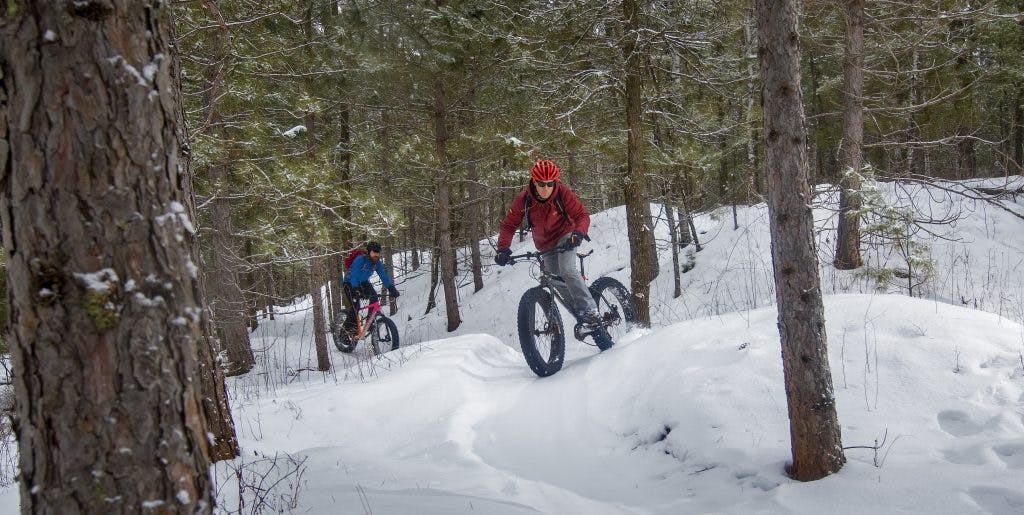
After spending winter after winter skiing in the mountain towns of Colorado and Montana, Hautala knew that the actual trails were only 49% of the equation. After a long day of skiing, he loved the eating and drinking and relaxing that came with the experience. Cuyuna needed the lifestyle and the amenities: it needed the things that come after the riding. “That’s why we ride our bikes in the first place: it’s about relationships and community and being together. Even if we ride by ourselves, we want to celebrate and relax with others.” It wasn’t that Cuyuna was a ghost town, or didn’t have any place to get a beer, it just deserved an upgrade. Visitors needed to feel welcomed, so that they’d enjoy their time and eventually, come back.
When Hautala started working with the crew, many locals felt like they had already found success. But it was kind of like having a few ski runs in a town with nothing else. With Hautala’s leadership, the town was able to transform. They pretty quickly added 5 more miles of single-track that allowed for the 25 miles to evolve into a one-way, one direction trail system. Cuyuna currently has 30 miles of trails complete with all kinds of amenities. Miner’s Mountain Rally Center includes changing stations, mechanic stands, directional kiosks and picnic/grilling areas. Miner’s Mountain Bike Skills Area was also launched, which is a progressive bike skills program allowing people to learn the skills they need ranging from beginner to intermediate, and expert. The expert course takes on the very large jumps, and is a rewarding goal for anyone looking to push their comfort level.
Sticking with the ski resort concept, Cuyuna opened True North Basecamp, which offers ride-in, ride-out lodging adjacent to the singletrack trails, and Red Rider Resort, a second ride-in, ride-out lodge is scheduled to open soon.
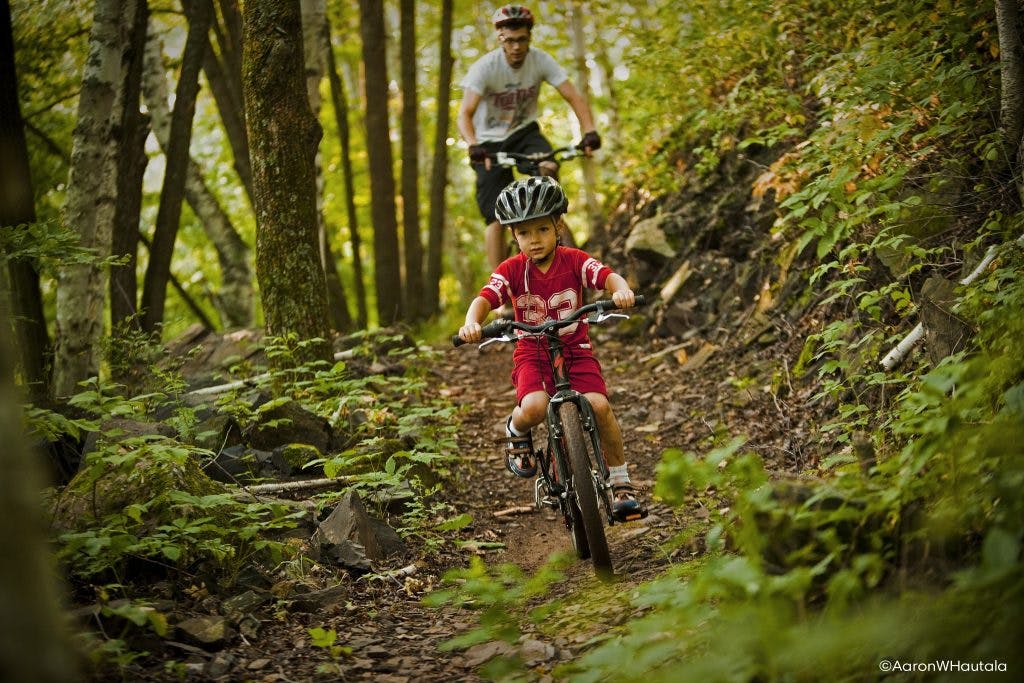
But where did all the additional funding come from? According to Hautala, some of it was luck. “We had an amazing economist who retired in our backyard.” That economist put together a case study proving the financial impact if the trails were built. The report was taken to legislators and used to convince businesses to invest. “This is the kind of thing that you can’t borrow from other places. We couldn’t take a model from another town and convince people that it would work in our place: we needed a report that was fully ours.” When you make the case through math, not much else matters.
Just like those initial meetings and grant applications, when the Cuyuna Lakes Mountain Bike Crew went to St. Paul for funding, they brought in a lot of community support. Five chambers of commerce, two different economic development corporations, ten major employers of the area, Main Street employers, and even businesses that were hours away. They had made a detailed case — not just to the town, but to the entire region — of the benefits that would come. “And when the legislators in St. Paul saw that their number-one request for funding was for a mountain biking trail system more than 60 miles away, they were dumbfounded.” Working together has remained the crew’s mantra. Hautala is the first to admit that he never could have gotten so much funding by himself. Or even just as the single town of Cuyuna. But as a collective of over 250,000 people, with a lot of different revenues, they made a much bigger case. “And we still barely got it passed!” Hautala reiterates that the promise of three days of riding without repeating a trail and guaranteeing that people would spend two nights, was the key to unlocking support and funding.
Once the trails started to open and people were using them, Hautala knew the communication needed to continue: that questions and feedback should be ongoing. He and the crew conducted a series of surveys, for everyone who used the trails. “We were pretty proud of ourselves until we got those 700 responses. That’s when we realized how much work we still had to do.” The team took the top ten suggestions and started checking them off their list as fast as possible. Five years later they had accomplished nearly everything people had suggested. They expanded the trails, put water stations in, added bike parking and signage and wifi hotspots. And the businesses starting coming. More and more people became interested in investing.
Following the survey, the crew conducted an economic impact study. They found that with the master plan in place, with over 60-miles of trails, the annual economic impact of visitors coming to the area of Cuyuna will be $21 million. They currently have the dollars appropriated to build the final addition of the plan, which will be finished at least by 2022. The full economic impact will likely be measured in 2025.
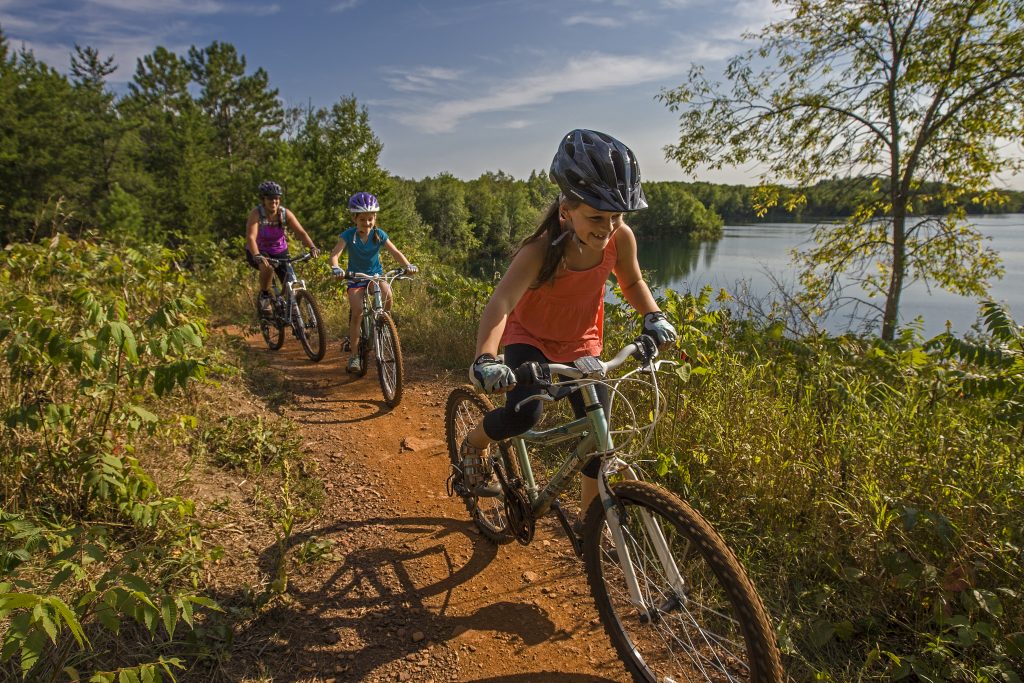
When Hautala talks about similar towns — places where there’s been a huge shift in the economy, whether it’s an industry or a mine that closes or changes — a lot of times the missing piece is communication. “The thing that we continue to be cautious about is that this isn’t a situation where we move in and displace those who were here first.” Hautala says that these changes in a town have to be looked at as opportunities to “come into a town and engage with folks and empower them to be active in their lifestyle.” But this can’t be done by preaching at them or telling them they’re wrong. Instead it’s done by creating such a magnetic culture that anyone would be crazy not to join. This remains Hautala’s biggest goal. To create a place where when visitors show up, everyone is happy to see them — everyone makes them feel welcome. Because that’s a place that people want to come back to. That’s a place that residents are proud to be a part of.
These goals aren’t accomplished in a year, or even a few years. It takes a decade or more. And the communication and community building never stops. These days the outreach is starting in the schools, and the focus is on the girls. With programs like Little Bellas, Cuyuna is creating the next generation of ambassadors in an inclusive way. Through the naming of the trails and attention to detail, the people of Cuyuna are tipping their hats at the hard work and dedication that came generations before, and they’re embracing a new era of their community. Even if a Cuyuna resident never uses the mountain bike trails, CLMBC hopes that everyone will get on bikes to ride to work, or to run errands. More than anything, they want everyone to feel like they’re part of this team.